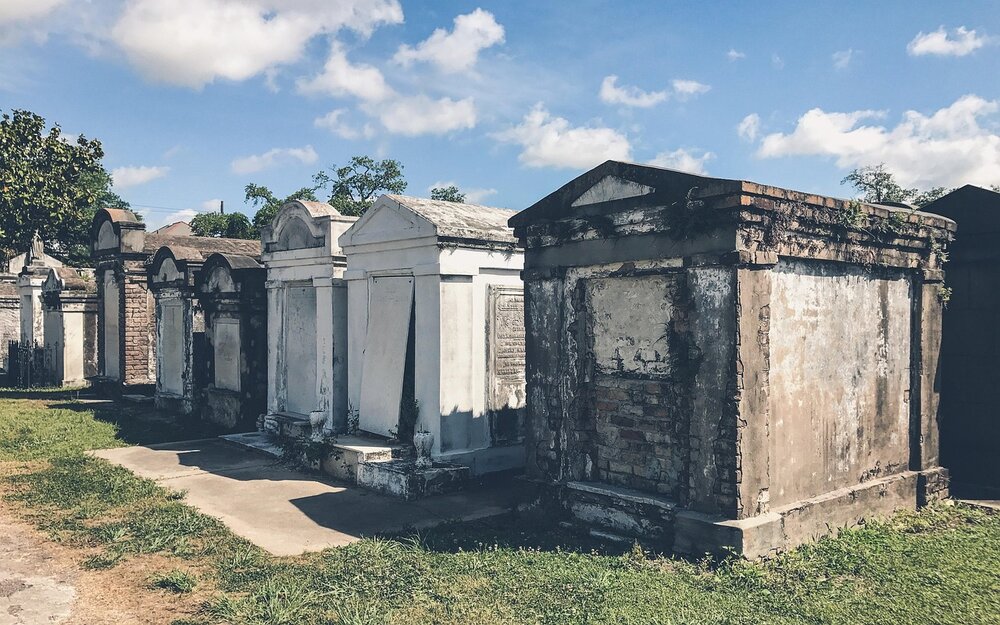Signs Your Burial Vault Needs Professional Inspection
June 20, 2025

Burial vaults are built to protect the integrity of a gravesite, but that protection depends on how well the vault holds up over time. Just like anything else underground, burial vaults can shift, crack, or wear down, especially in a place like Ottawa where the seasons hit hard. Ignoring early warning signs could lead to bigger problems later, including damage to the casket or disruption of the surrounding ground.
Keeping an eye on changes and getting ahead of wear and tear matters more than most people realize. Small cracks can turn into major breaks, shifts in the ground can affect drainage, and even a strange smell in the soil might signal moisture building up inside. Families who take the time to spot these early signs often avoid repairs, unexpected expenses, and added emotional stress.
Physical Signs of Wear and Tear
To catch signs of damage early, start by checking the surface above the vault. What’s going on at ground level often mirrors what's happening below. Changes don’t usually appear overnight. They creep in over time. But if you know what to watch for, it’s easier to spot.
Here are a few red flags that something may be wrong:
- Cracks in the concrete vault lid or along the base
- Uneven or shifting ground across the burial site
- Sudden sinking or pooling water in areas that were level before
- Loose or dislodged turf, especially after rainfall
- Unpleasant smells after snow melts or heavy rain
That last one catches a lot of people off guard. A musty or sour scent coming from the site can mean that moisture is trapped inside the vault, which can allow mildew or rot to start forming. While it doesn’t always mean something is failing, it’s a strong sign that something deserves a closer look.
Large trees nearby could also be putting pressure on the vault. Root systems move toward moisture and warmth, which can take them straight to the vault. If you begin to notice bumps on the surface or roots sticking out where they didn’t before, you might need to look deeper.
Effects of Weather and Seasonal Changes
Ottawa’s climate brings its own set of challenges. Burial vaults here deal with everything from deep freezes to rapid thaws, bursts of rainfall, and stretches of intense heat. These shifts in temperature and moisture level move the soil around, adding stress and loosening what should be locked in place.
Here are a few seasonal issues to keep in mind:
- Freeze-thaw cycles in winter loosen soil, weakening support around the vault
- Melting snow in spring causes runoff that can soak into weak spots
- Dry summers lead to shrunken soil, which shifts quickly again after storms
- Heat causes concrete to expand, which causes tiny cracks that spread
After periods of heavy rain or a quick thaw, stepping onto the site can give you clues. If the ground feels softer in some places and tighter in others, water may not be settling properly. These uneven conditions can push or press on the vault. Over time, those pressures can turn small flaws into serious damage.
If water isn’t flowing away from the burial plot the way it should, clogged drainage or old runoff paths may be to blame. Uneven water storage around the base is one of the easier problems to notice early, and it’s a good reason to call in help before issues grow.
Common Maintenance Issues
Even if a burial vault looks fine from the outside, problems can grow slowly under the surface. Water, soil pressure, and plant growth are just a few of the natural forces that can wear things down over time. Knowing what to watch for can help you deal with trouble before it spreads.
Poor sealing is one of the top causes of long-term damage. As materials expand and contract with temperature swings, older vaults can develop small openings where the lid once fit tight. Early on, moisture slides through unnoticed, but eventually, it collects inside and starts causing damage.
In Ottawa, waterlogging is a concern because of the area’s spring runoff and summer rainstorms. If the soil becomes soaked often, water can start soaking into weak spots at the base. Watch for puddles or patchy ground conditions. These can be signs that the vault is already dealing with too much water pressure.
Root growth is another common issue. Plants and trees near a vault will slowly expand their roots toward moisture. These roots don’t need much space to cause damage. Once they find a gap, they work their way inside and widen any existing crack, sometimes shifting the structure along the way.
Other problems you may notice include:
- Soil erosion near the edges, often due to poor drainage or slope
- Movement or tilting of the vault if the ground beneath it isn’t stable
- Tiny cracks in older concrete, especially around seams or corners
- Surface wear on turf or plantings above the vault, leading to ground exposure
Even if these issues seem small, they shouldn’t be ignored. Changes around the vault can happen over several seasons and may not show signs of a larger issue until things get worse.
Importance of Professional Inspections
Routine walkthroughs help, but they don’t show everything. It’s easy to think everything is fine if the surface looks normal. But that assumption can hide growing issues. A trained professional knows what to look for and how to test a burial vault’s true condition.
Experts understand Ottawa’s soil and how vaults respond to seasonal stress. Slight shifts or hairline cracks can all be signs of movement or water seepage. Someone trained to recognize the early patterns can spot a problem before it reaches the surface.
You don’t need inspections every month. But aligning them with seasonal shifts, especially after winter or during late summer, helps reduce surprises. That’s when temperature and moisture changes put the most pressure on the vault, and spotting developing issues early can make all the difference.
Times when it makes sense to schedule an inspection:
- If you notice uneven soil, standing water, or any kind of sinking
- After a major rainstorm, thaw, or flood has moved soil around
- When nearby trees or shrubs start growing too close to the burial spot
- Every few years, even without visible signs, to keep everything on track
Even if everything looks fine, peace of mind is worth the cost of a checkup. Like a roof or a basement, a vault protects something deeply important. It makes sense to give it a regular review.
Protecting What Matters Most
Burial vaults aren’t usually top of mind once they’re in place. But even strong materials need care. When a vault is left alone for decades without attention, it can slowly start to break down under pressure from natural changes in the environment. Staying informed and observant is one of the easiest ways to make sure that doesn’t happen unnoticed.
The best thing you can do is keep it simple. Walk the site after major weather events, pay attention to smells and textures in the soil, and trust your gut if something feels off. When in doubt, getting professional insight early saves you time, cost, and future stress.
Caring for a burial vault isn’t just about avoiding repairs. It’s about showing respect for the loved ones the site holds. Whether it’s been one year or twenty, keeping the space safe and stable gives families peace and assurance that their resting place will be honoured for generations.
Preserving the dignity and integrity of a burial site takes ongoing care and attention. If you're planning ahead or looking to better understand long-term upkeep, reviewing burial vault prices can help you make confident, informed choices. Highland Park Cemetery is here to support you with services that honour and protect what matters most.
Highland Park Cemetery
2037 Mcgee Side Road,
Carp, Ontario K0A 1L0
Telephone: (613) 831-4600
info@highlandparkcemetery.ca


